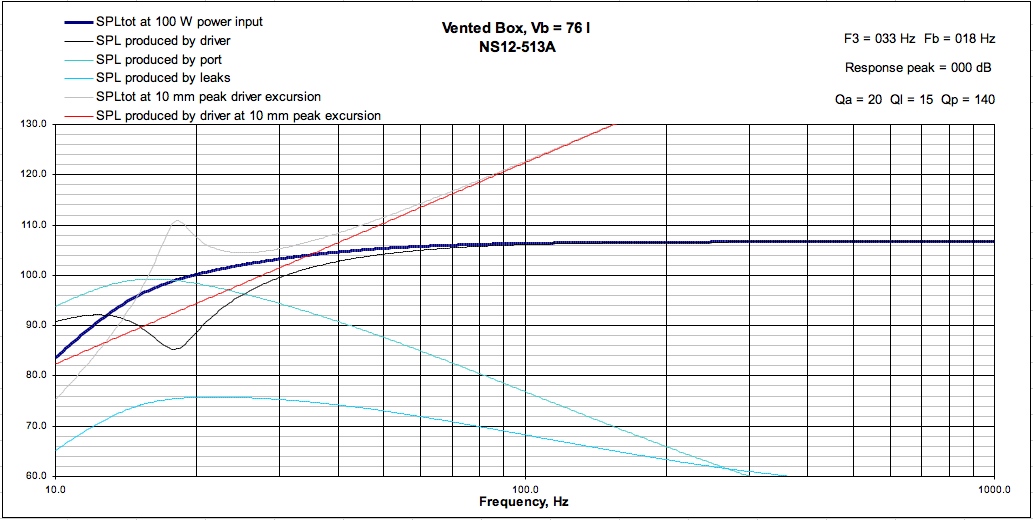I was modeling multiple subs and vented enclosures and the max spl at max cone excursion (red) line was well into the response line (on the first graph on the Vented tab). I was even putting in models of subs that people had built and was seeing this happen. Either I'm doing something wrong, interpreting it poorly, or most people ignore that since those power and spl levels are rarely reached. Am I far off base here?
Also, can I just grab a cheap sub (Mach5 MAW-12?), 20" Sono, ~300w rms, a proper port, and hope for the best? I know I want about 20hz tuning or so, say 60/40 music/ht, so I can calculate port length and Sono height accordingly. Is there any other science to this (besides just experimentation for fun, which is exactly what i'm doing)? I have been playing with the modeling software often and besides the excursion issue I think I know what i'm doing.
Thanks guys,
Max
Also, can I just grab a cheap sub (Mach5 MAW-12?), 20" Sono, ~300w rms, a proper port, and hope for the best? I know I want about 20hz tuning or so, say 60/40 music/ht, so I can calculate port length and Sono height accordingly. Is there any other science to this (besides just experimentation for fun, which is exactly what i'm doing)? I have been playing with the modeling software often and besides the excursion issue I think I know what i'm doing.
Thanks guys,
Max



Comment